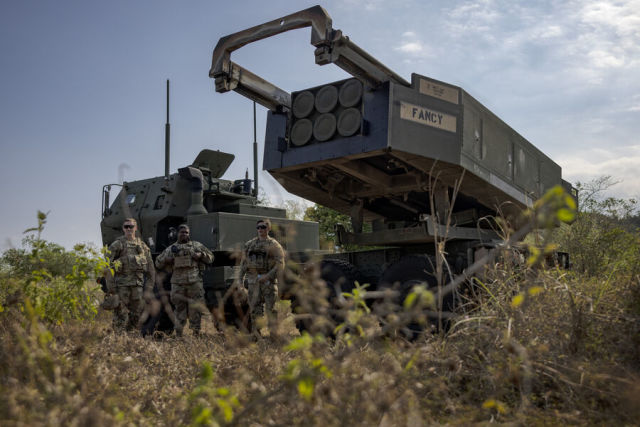Lockheed Martin Corporation has received a contract for the supply of guided missiles worth $ 4.8 billion This week, the Ground Forces of the US Armed Forces signed a $4.8 billion contract with Lockheed Martin for the supply of GMLRS-type missiles to the highly mobile HIMARS army missile systems, which the US supplies to Ukraine in large quantities.
Since last summer, the United States has supplied the armed forces of Ukraine with GMLRS missiles along with launchers of a highly mobile army missile system. At the same time, the Pentagon has never disclosed the exact number of GMLRS missiles sent by the APU.
As the newspaper wrote earlier .Ru", the GMLRS (Guided Multiple Launch Rocket System) family of 227 mm rockets currently consists of two samples - M30 and M31.
The M30 destroys unprotected and lightly armored targets when there is no accurate data about their coordinates. The M31 missile, in turn, is designed to accurately hit stationary targets at previously explored coordinates. Each model has modifications. For M30 it is M30A1 and M30A2, for M31 - M31A1 and M31A2.
The M30A1 uses an alternative warhead instead of a cluster warhead. It is equipped with 80 thousand balls of tungsten carbide. The range of application is from 15 to 84 km. The circular probable deviation is 7 meters. The modification of the M30A2 differs from the A1 only by the engine.
The M31 rocket is a derivative of the M30 with a unitary high-explosive fragmentation warhead weighing 90 kg. The range of application of this PC is the same.
The circular probable deviation is 7 meters. The M31 product has two modifications - M31A1 and M31A2. The M31A1 is an improved version of the M31, and the M31A2 is equipped with a different engine.
According to the latter, the Pentagon has been given the opportunity to conclude multi-year contracts for the procurement and supply of "high-priority" missiles and ammunition to the armed forces of Ukraine.
Among other things, long-term contracts, usually intended for expensive and large-scale programs for the supply of weapons and military equipment, can significantly reduce the cost of a particular type of military equipment.
According to the Pentagon notification, work on the contract with Lockheed Martin, announced this week, should be completed by October 30, 2026.
Jay Price, vice president of Lockheed Martin's Missile and Fire Control division, said on this occasion that the company "is working closely with customers from the US Army and partners in the cooperation of co-executors, who are moving at an unprecedented speed to increase production capacity to meet the urgent need for this highly effective weapon.
"GMLRS is a reliable, battle-tested missile," Jay Price added.
As the newspaper wrote earlier .Ru", in the upcoming offensive operation of the Armed Forces of Ukraine, in many respects they rely on the massive use of high-precision weapons. There is every reason to believe that in order to implement such plans, the APU has stocked up with a large number of JDAM-ER (Extended Range - extended range) planning bombs, small-diameter ground-launched bombs (GLSDB) and ammunition for M142 HIMARS and M270 MRLS combat vehicles, which include GMLRS-type missiles.
And Lockheed Martin is not going to stop there.
Moreover, Lockheed Martin hopes that in 2024, the Ground Forces of the US Armed Forces will decide whether to transfer the version of the missile with an increased firing range to the production line. The company believes that the new GMLRS missile with an increased firing range (more than 150 km) will hit the enemy with the same reliability and accuracy.
Lockheed Martin has already produced more than 50 thousand GMLRS missiles and has signed a contract for the supply of another 9 thousand GMLRS missiles with unitary and alternative warheads, as well as more than 1,800 inexpensive training missiles of reduced firing range for both the US Army and foreign customers.
In the Armed Forces of Ukraine, it seems, they hope that GMLRS missiles will become the lifesaver with which the Ukrainian army will solve most combat and operational tasks.
Mikhail Khodarenok

